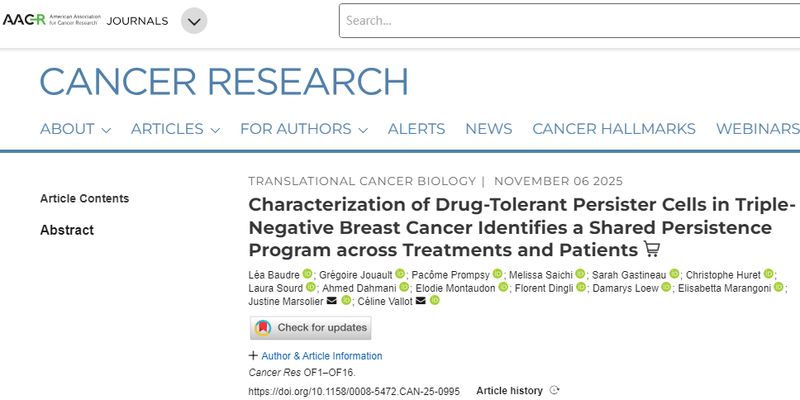肺癌,作为全球发病率和死亡率最高的恶性肿瘤之一,对人类健康构成严峻威胁。其中,约85%的病例属于非小细胞肺癌(NSCLC),且多数患者在确诊时已处于晚期。面对这一挑战,精准医疗的进步为患者带来了新的希望,而血浆游离DNA(cfDNA)高通量测序技术正成为指导靶向治疗、评估患者预后的重要工具。
cfDNA高通量测序:液体活检的革新
传统的肿瘤诊断方法往往具有创伤性或灵敏度不足的局限性。而cfDNA检测,作为一种无创或微创的“液体活检”技术,通过分析血液中由癌细胞释放的循环肿瘤DNA(ctDNA),为肺癌的诊断、治疗监测和预后评估提供了全新的视角。当肿瘤细胞坏死或凋亡时,其DNA片段会进入外周血,导致肿瘤患者血浆中cfDNA水平升高。与正常人相比,肺癌患者的cfDNA含量和完整性通常更高,这为精准检测提供了基础。
cfDNA高通量测序的优势在于其高特异性和高灵敏度,能够全面、系统、准确地解读基因突变信息,从而为临床医生快速、有效地筛选靶向治疗药物提供重要参考。
基因突变与非小细胞肺癌:研究发现
一项针对313例非小细胞肺癌患者的血浆cfDNA高通量测序研究,深入探讨了靶向治疗相关基因变异类型及数量与患者预后的关系。研究结果揭示了以下关键信息:
- 高频突变基因: 在所检测的基因中,EGFR、TP53和ERBB2是突变频率最高的三个基因。其中,EGFR基因突变频率高达36.04%,TP53基因突变频率为30.63%,ERBB2基因突变频率为4.95%。这些基因的突变情况对于靶向药的选择具有重要指导意义,例如EGFR基因的19del、L858R、T790M等突变位点。
- 基因突变数量与生存期的关联:一个重要发现研究发现,患者的生存期不仅与热点靶向基因的表达情况相关,还与血浆cfDNA高通量测序中检测到的I类和II类靶向相关基因变异的个数呈负相关。这意味着:
- 无靶向治疗相关基因变异的患者,其生存期显著长于有变异的患者,死亡风险可降低63.2%。
- 单纯一个基因位点变异的患者,生存期长于多个驱动基因位点变异的患者,死亡风险更低。
- 在检测到的I类及II类靶向治疗相关基因数量在3个以内时,基因数目越少,患者的生存期越长。
- 这一发现与部分传统认知有所不同,提示基因变异并非越多越好,其生物学背景和相互作用可能对患者预后产生复杂影响。


图1 患者纳入和排除标准流程图
Fig. 1 Flowchart of patient inclusion and exclusion criteria


图2 靶向治疗相关基因阳性位点比例图
Fig. 2 Target drug locus variation map

图3 靶向治疗相关基因突变位点位点丰度热图
Fig. 3 Locus abundance map
Targeted therapy-related gene loci only included class Ⅰand class Ⅱ targeted therapy-related gene loci.

图4 靶向治疗相关基因位点不同突变个数的生存分析比较图
Fig. 4 Survival curves of targeted therapy-related gene mutation locus
Targeted therapy-related gene loci only included class Ⅰ and class Ⅱ targeted therapy-related gene loci. OS: Overall survival.

图5 热点靶向基因表达与否对患者生存期影响
Fig. 5 Effect of hotspot target gene expression on patient survival
A: Difference in survival of EGFR gene expression or not; B: Differences in survival of TP53 gene expression and non-expression; C: Differences in survival of EGFR gene expression combined with TP53 gene; D: There was no difference in survival between the expression of gene associated with targeted therapy drugs and those associated with targeted therapy drugs. Targeted therapy-related gene loci only included class Ⅰ and class Ⅱ targeted therapy-related gene loci.

图6 生存期差异的因素分析
Fig. 6 Factor analysis of survival differences
A: Survival differences in pTNM stage at the time of diagnosis; B: Whether there is a history of surgery during the middle and advanced stage of cancer, and the difference in survival time.

图7 不同影响因素情况下,靶向治疗相关基因位点不同突变个数生存分析
Fig. 7 Survival analysis of different mutations at targeted therapy-related gene loci under different influencing factors
A: Differences in the survival of different mutations in stages Ⅲ-Ⅳ; B: Differences in survival of different mutations in patients without smoking history; C: First-line treatment is the difference in survival of patients with different mutations on targeted therapy alone; D: There was no difference in the survival of different mutations without relevant surgical history. Targeted therapy-related gene loci only included class Ⅰ and class Ⅱ targeted therapy-related gene loci.

图8 Cox回归多因素生存分析图
Fig. 8 Cox regression multivariate survival analysis
A: Survival analysis of the number of positive sites of different targeted therapy drugs; B: Risk estimation model diagram of the number of positive sites of different targeted therapy drugs. Targeted therapy-related gene loci only include class Ⅰ and class Ⅱ targeted therapy-related gene loci.

早期诊断与综合治疗的重要性
研究进一步强调了早期诊断和治疗对非小细胞肺癌患者生存期的决定性影响。确诊时处于I期或II期的患者,其生存期显著长于III期或IV期患者。这再次印证了“早检查、早发现、早治疗”对于延长患者生命的重要性。同时,手术史、吸烟史等因素也对患者预后产生影响,提示综合治疗方案的制定需考虑多方面因素。
cfDNA检测在肺癌管理中的价值
cfDNA高通量测序不仅能用于靶向治疗药物筛选,还具有作为肺癌疗效持续监测生物标志物的巨大潜力。它能够提供全面的基因突变信息,帮助医生为患者量身定制治疗方案,实现真正的个体化精准治疗。尤其对于晚期非小细胞肺癌患者,cfDNA检测在基因突变检测方面展现出高灵敏度,与组织活检结果具有较高的一致性,使其成为一种有力的替代方案。
结语:迈向个性化精准治疗
这项研究为非小细胞肺癌的精准治疗提供了宝贵的数据支持。通过cfDNA高通量测序,我们能更深入地了解患者的基因突变特征,从而更准确地选择靶向药物,并评估治疗效果和预后。对于正在寻求最佳治疗方案的癌症患者而言,了解自身的基因突变情况至关重要。这不仅有助于选择最合适的靶向治疗方案,也为提升生存质量、延长生命带来了新的希望。





